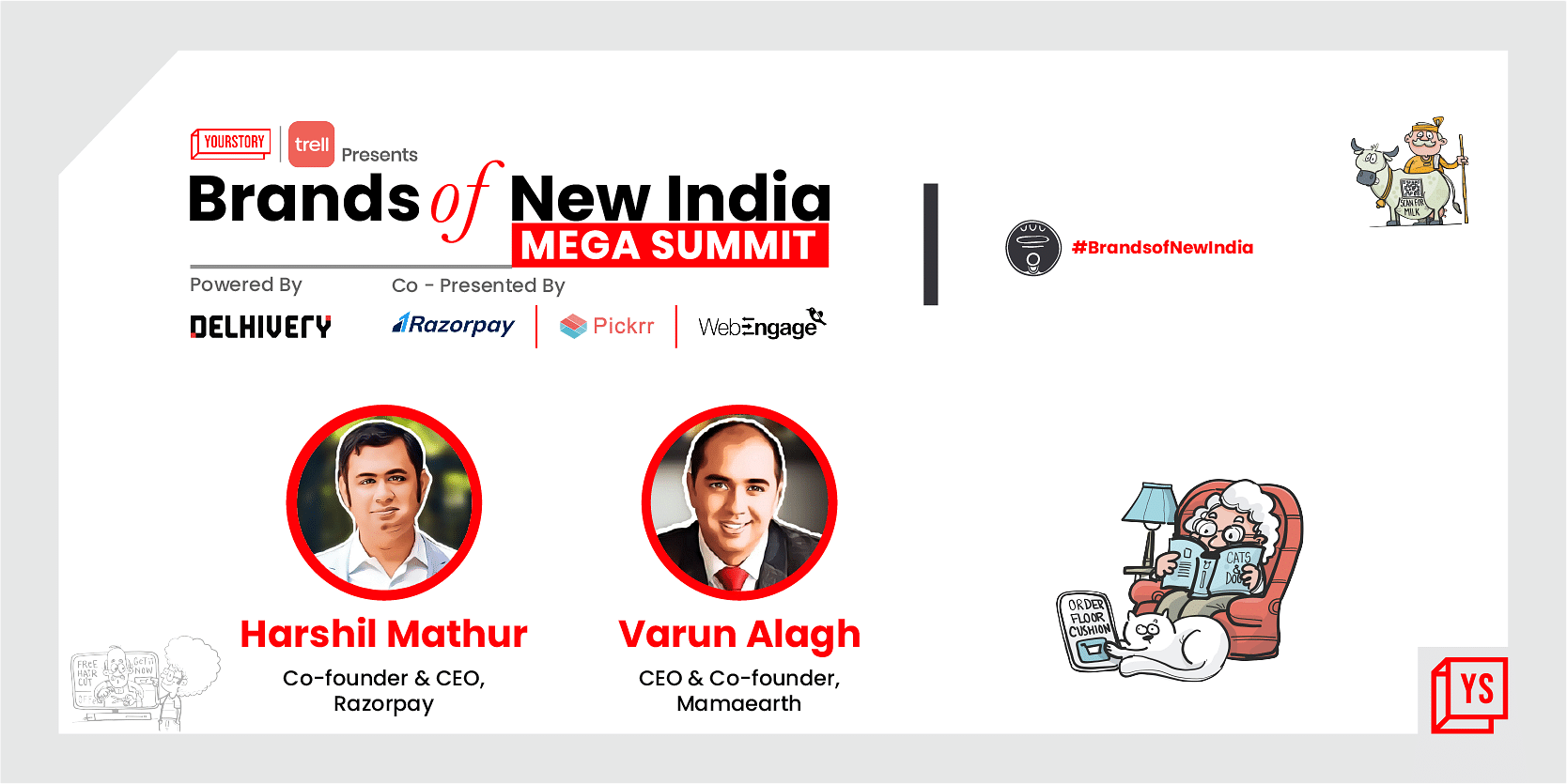Consumption patterns in India are evolving. With the rise in online shopping and spurred by the opportunity to capitalise on white spaces and a more demanding consumer, new-age brands are emerging. An Avendus report cites a $100 billion addressable market by 2025. D2C brands are set to disrupt the way India shops – and how.
To help unpack how India can unlock the next phase of growth for India’s $100 billion D2C movement, a fireside chat brought together Harshil Mathur, CEO and Co-founder, Razorpay and Varun Alagh, CEO and Co-founder Mamaearth at the premier edition of YourStory’s Brands of New India Mega Summit.
The two-day virtual event on January 28-29, 2022 brought together leaders, entrepreneurs, innovators, policy makers, and enablers who are leading the transformation in the D2C landscape of the country.
Here are the key takeaways from the insight-packed discussion.
On Mamaearth crossing the Rs 100 crore mark in just four years
Mamaearth not only became Asia’s first brand to get the MadeSafe certification for its toxin-free products but also crossed Rs 100 crore turnover mark in just four years. Talking about this achievement and how the duo made it happen, Varun says it was a strong emotional parent-to-parent connect. “The brand’s proposition and the dire need for toxin-free products in the baby care segment made us reach where we are today,” he said.
“The triad of digital disruption, namely the democratisation of media, the proliferation of e-commerce, and the evolution of payment ecosystems helped us cross the 100-crore mark in just four years,” he added, talking about the key insights, decisions, and strategies that led to achieving this landmark in record time.
The biggest fintech disruptions in D2C
Razorpay’s Harshil spoke about how their close involvement with the D2C segment saw them play an active role in fintech disruptions in the space.
“We have an early view of it, because we used to power payments for a lot of India’s pioneering D2C companies from the early days. We feel a bit like parents, so to speak,” he said.
“Optimising for repeat customers through innovations like one-click checkout, and subscription models where brands use recurring payments to build customer relationships are some of the biggest fintech disruptions we’re seeing in the D2C space,” he added.
Talking about the incredible potential of D2C, Harshil said,“D2C is becoming the future of commerce, especially in Tier I and II cities, and we’re doing a lot of things to enable the next phase of D2C brands that are coming up to help them achieve even more scale,”.
The next phase of growth for the D2C sector
“I believe the next phase of D2C growth will come from going beyond Tier III into ‘Bharat’, and getting them to adopt DDC as a mode to transact,” said Varun, contextualising the Mamaearth growth story, and how the company is also planning to expand its presence in Tier II and III cities and introduce a new range of products.
“Our plan is to build Mamaearth into a Rs 500 crore brand,” he said, adding that he believed the sector is going to see both width and depth as it scales across new product categories, geographies, and demographics.
Harshil however, took a contrarian approach on what he believed would be the next phase of growth for the D2C sector as compared to Varun.
“There’s a large majority of consumers who have started using the internet for communication. However, they’re yet to use it for commerce – pointing to huge potential of growth for the segment,” he said.
“There is a new population coming online for bill payments and travel ticket purchases, especially on railway ticket platforms. In the last year alone, we saw bill payments go up by 200 to 250 percent,” he added.
Harshil agreed that the next couple of years would be really exciting as new consumers and categories get unlocked. “We’ll see a lot more brands coming in to solve those problems from the D2C and fintech side,” he said.
Key factors that will power India’s D2C ecosystem
“A micro trend we’re noticing is the shift from family consumption to individual consumption,” said Varun talking about micro trends and factors that will power India’s D2C ecosystem for the next phase of growth.
“For a country like India, even a niche opportunity can effectively be really large opportunities in the longer term,” he added, contextualising the latitude of opportunities for growth.
“We’ll see many different specialist and tailor-made products coming out for specific categories of customers, that will completely change the game. This is an immense, untapped opportunity for D2C brands,” said Harshil.
“There’s a lot of solutioning underway for subscription payments. I also believe that we’ll see subscriptions issues being solved completely in the next six months,” he said.
“Our focus will be how we can create the right set of financial tools, services, and products for D2C brands so that they can just plug into us and focus on what they do best, which is differentiating for the core customer,” he added.
Watch Brands of New India Mega Summit – on demand
You can watch videos from all the sessions of Brands of New India Mega Summit here. Don’t forget to tag #BrandsOfNewIndia when you share your experience, learnings, and favourite moments from the event on social media.
For information on future events, collaborations, and information regarding the D2C ecosystem, please visit our website.










